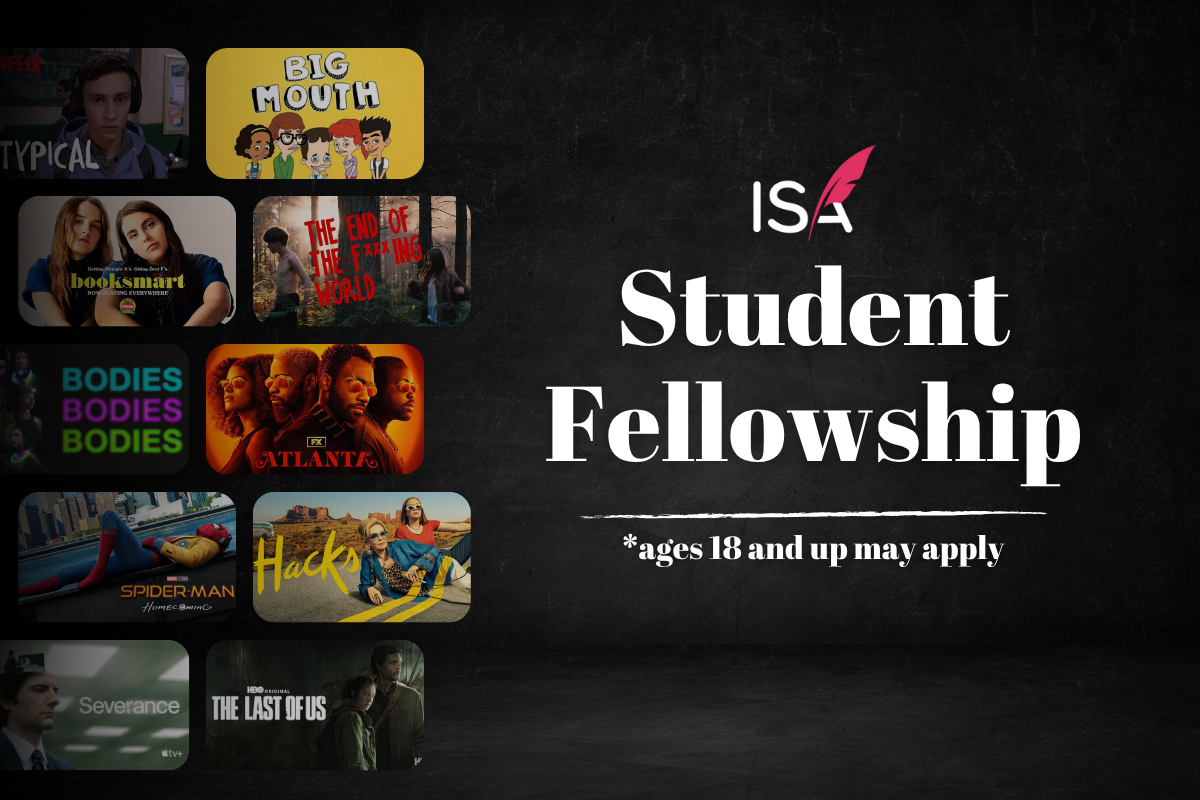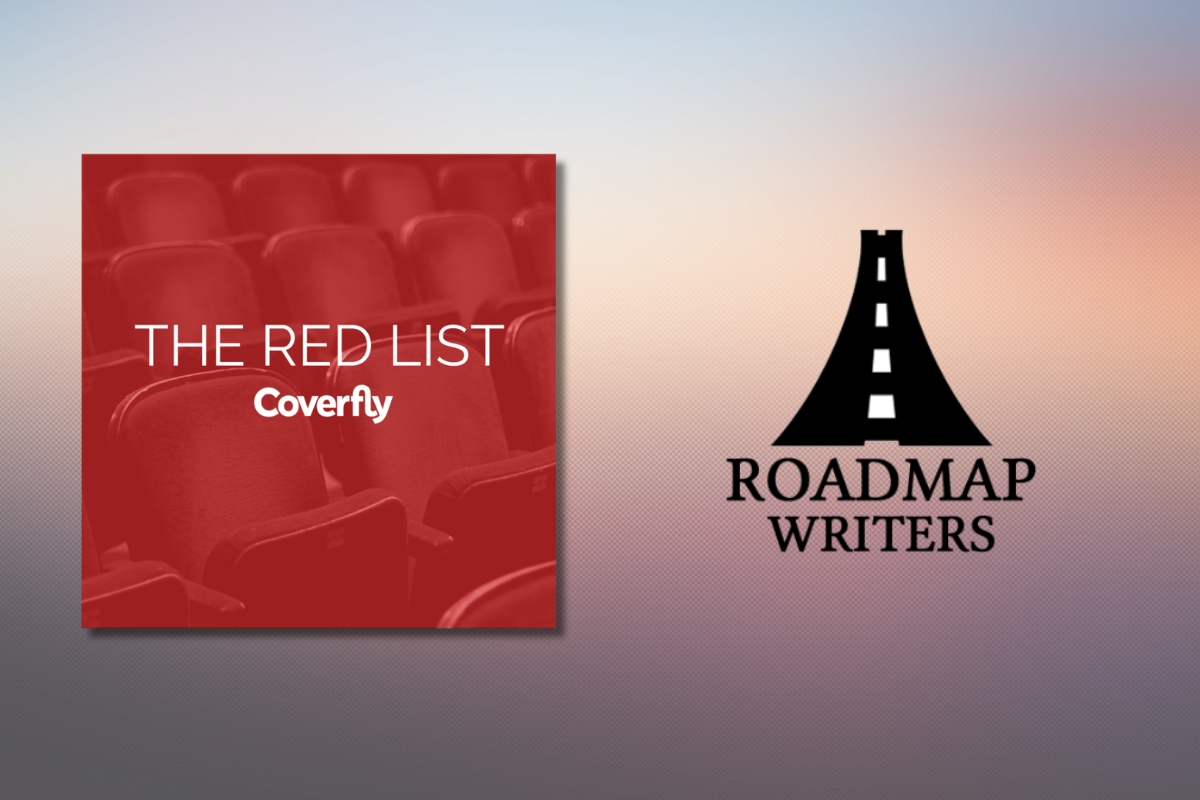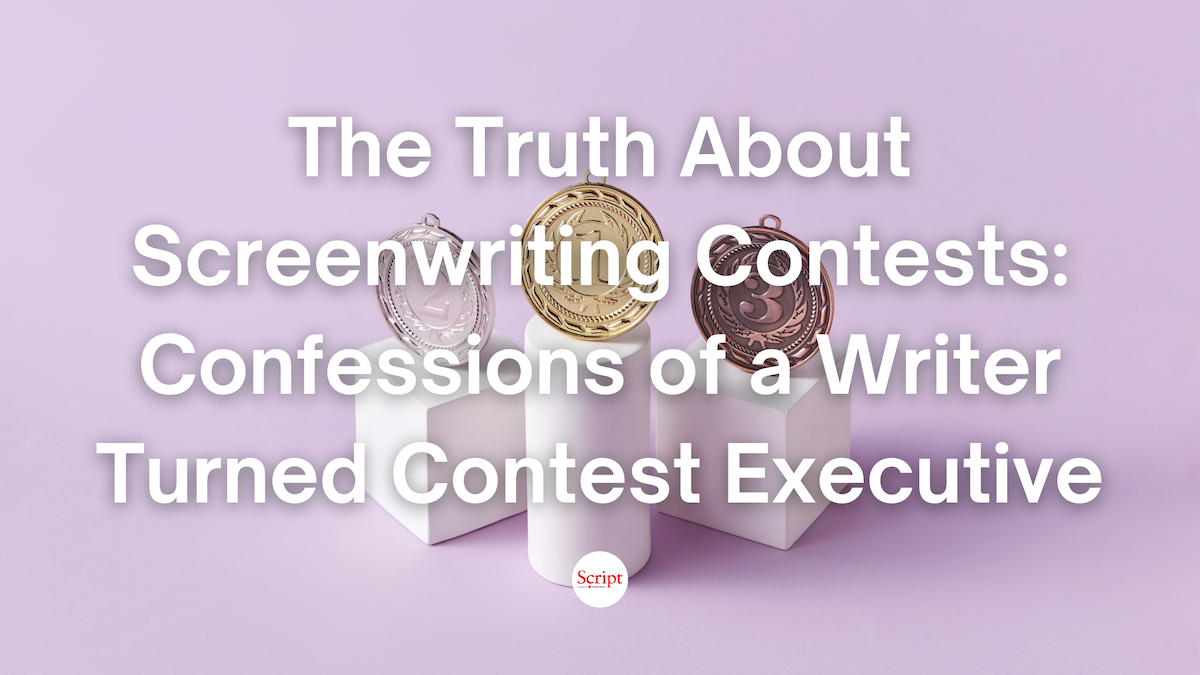ScriptHop: World’s First Interactive System for Your Script
Readers are the gatekeepers to Hollywood, and their coverage can make or break your chances of success. ScriptHop Co-Founders create an innovative way to present your work to industry executives that changes the game for pitching and selling your screenplay.
“I finished my script, now what?” Writers anticipate a quick response, giving them the A-B-C instructions on how to get a script read and sold, but it’s never that simple. Even if you get your screenplay past the gatekeepers, it’ll most likely head straight to their coverage department, where they’ll come up with their own logline and synopsis, taking every ounce of control and writing voice from your hands.
Coverage is subjective, yet Hollywood lives and dies by it. Well-meaning readers are exhausted, juggling multiple jobs, and being paid by the script. Under tight deadlines, they whip coverage off, get a meager paycheck, rinse, and repeat. Even if your reader has a fat bank account and plenty of sleep, your rom-com script may hit their desk after they just got dumped by their partner and are sobbing into their vodka. Your chances of a “recommend” instantly plummet. It’s all a crapshoot. Which is why writers must explore every out-of-the-box path to success and take as much control as they can over their art.
A press release recently hit my inbox. I don’t always jump when I hear that ping, because most of them are fluff, but this one got my attention:
“ScriptHop introduces an online tool for Hollywood that allows writers to share their screenplays more securely and promises a new kind of dynamic, interactive, and navigable experience that excites people to read. It also offers writers more influence on the distillation process used by Hollywood to make decisions about projects.”
You had me at giving writers more control of their destiny.
I reached out to the ScriptHop team for a deeper discussion on the genesis and importance of creating a platform that could very well change everything about how the film industry interacts with writers.
On Zoom, I met with Scott Foster, Creative Director, Brian Austin, CEO, and Jory Weitz, Director of Industry Relations.
Scott and Brian are the Co-Founders, with Brian being the technical mind behind ScriptHop. Jory Weitz, (producer of Napoleon Dynamite, Nacho Libre, and the upcoming Dark Divide, starring David Cross) enthusiastically joined the team, after starting his career as a theater casting director in New York before branching out into studio and indie films.
This interview has been edited for content and clarity.
This talented trio has a long history and in-depth understanding of the challenges for writers to get discovered. Scott worked at UTA for 12 years as a reader, reading about 5,000 screenplays, before becoming their Director of the Story Department, in charge of the readers and trainees.
Scott Foster: The Story Department handled coverage for a couple of hundred agents. We were basically creating the marketing for writers. There’s the judgment portion of coverage and the factual portion. A lot of readers are right out of college and not necessarily well read. They’d be assisting an agent and also be assigned a script from me. They’d be burning the midnight oil and reading scripts at 2AM. I saw just how backwards that process was. Also, when you think of Hollywood, the high tech is all in production, but when it comes to things in development, the technology is behind the times. I was managing our UTA library with a Microsoft Word document (laughs). So, we had a thousand screenplays written line by line in Word.
When I started analyzing the story development process, how we managed these libraries, and handled the marketing for writers, it was at this time that I was introduced to Brian.
Jeanne Veillette Bowerman: And how did you connect with Jory?
Jory Weitz: Right before I was about to leave show business for good, I got the call about Napoleon Dynamite. I missed NY because everyone read scripts there. I never engaged in any conversations on any level without having an informed person on the other side of the table. That was a lot of the driving force for me. When I met Scott, we were producing, and we both fervently believed in the script. But when people passed on scripts in L.A., I knew the agent hadn’t even read it, and they were passing on the project not knowing anything about it. To inspire people and arouse curiosity and to want to engage on a literary level is very challenging. Once I found out what Brian and Scott were doing, I wanted to be part of this conversation. The core of what should drive all of us is the writing, the creation. As a casting director, I try to enhance and colorize that, as I do as a producer. The celebration of the writer needs to come to the forefront much more.
Brian Austin: The assistant or intern writes up the coverage. The downfall for the writer is that now the intern or assistant is writing up your elevator pitch and logline, and that document is going around the entire agency. You have very little control of that. That narrative taught us that we needed to build something that helped the writers and the agencies at the same time, and the point of entry was in the delivery of the script.
Today, people send scripts through email as a PDF. You might be tempted to put the script, a lookbook, and text into the email. As soon as you hit that send button, you lose entire control. They could have deleted it or even forwarded it to 200 people. You just don’t know. So, on ScriptHop, we built a tool called the “Packet” that allows you to put everything you need to promote your screenplay into one link. Think of it like sharing a file with someone on Dropbox. You can have a clean email with one link that your agent or manager can send around.
When the recipient clicks on the link, it opens up the Packet in their browser. They don't need any special software or accounts in our system.
Right at the top is the document section where you have access to the script and any other project documents you'd like to include. They can be viewed in the browser or downloaded separately.
Documents in the Packet will always be the most recent revision. You can update files, and the same Packet link will display those new versions. You never have to worry about an old version of your script being accidentally viewed.
Anytime someone clicks the Packet link, you get a notification. You’ll also get notified when someone reads the script or your bio. You can upload a picture of yourself, and a list of other scripts you have. So, if they like your writing, they can see what other projects you’ve written.
It’s entirely up to the writer on how much they want to put together for the Packet. You can include detailed information, or you can take a minimalist approach. Maybe you only want to note your genre, synopsis and title. The writer is in control. But even that minimalist Packet gets the benefit of the most recent revision of the script. The thing we want to try to overcome is coverage.
When a reading department gets a Packet link sent to them, they’re going to be able to mark and highlight loglines and synopses then paste them into their coverage document. It’ll save them a ton of time, plus readers hate writing synopses anyway.
Scott: I can testify to that. Again, I did about 5,000 of them. I never enjoyed doing the synopsis or the character-breakdown information. What I wanted to do was write the review.
Jeanne: Will this be the end of the studio reader?
Scott: We aren’t going to take away any reader jobs. We’re going to make their jobs more enjoyable. They’ll have more time for meaningful contemplation of your script instead of “Oh crap, it’s two in the morning, and I’ve got an hour to both write the synopsis and judge the script!” All the reader will have to do is focus on the judgement.
Brian: And then you, as the writer, can secure your vision as your script moves through Hollywood. That way, your logline is the one being used, not something a reader wrote up in two minutes. You want to have that chance to get your voice out there.
The other purpose of the Packet is getting people excited to read your project. That’s what the Packet is all about. It’s a consistent format, so whenever someone gets a link, they’ll know exactly where to find the logline, synopsis, etc., making everyone hyper efficient. It’s also a high-level document that allows you to dive down where you want to. It’s interactive.
*Watch how it works in this demo.*
Without reading anything, you get drawn into it just from the visuals. The highlight reel allows you to input imagery, dialogue samples and a tagline. If it were Aliens, you might put, “In space, they can’t hear you scream.” The idea is that you are getting people to read and get a sense of your writing without having to look at your script.
Scott: We’ve noticed there’s a psychologically powerful effect of seeing dialogue fade in. You want to see what’s coming next.
Jory: As a producer, you have to create a kind of vibrant and interactive tissue. When I passively send a PDF out, there’s a gaping chasm that opens up between me and the agent, and the script ends up in a netherworld. For me to arouse curiosity, I tell the agent I’m sending this link over. Just start to interact with it. It’s a huge shift. It’s just a matter of agents starting to rewire themselves and get excited about reading again.
Scott: You can choose some of what you think are your best dialogue samples. If I’m a producer and I see great dialogue, I’m going to want to read it. Like Jory said, it’s the longest distance from your [pitch] email to them actually diving into your script.
Jory: Also, on a visceral level, you’re interacting with the writer. You normally only see a script on a one-dimensional level. Here, on a multi-dimensional level, the writer is being revealed. You’re stepping out from behind the curtain. On a marketing level, on an IP level, that does not exist now.
Jeanne: When I look at the minimalist Packet, I assume the writer is focused on solely being a writer. But the more elaborate Packets make me instantly imagine that writer as also aspiring to be a director. You immediately get a feel for the person behind the script.
Scott: I should tell you, I created what you just saw, and I am absolutely not artistic. They are all Google images, and we provide tips on how to do it. The strongest point we can make is if I can do it, anyone can do it.
Jeanne: Good point (laughs). Because of COVID, everything is changing now, including how people interact in the industry. The timing of ScriptHop feels perfect. You didn’t plan this pandemic, but I’m starting to think you did (laughs).
Scott: It’s two things—it’s a delivery system, and it’s also the world’s first interactive system for your script. With interactivity comes engagement. We see this system as a place where they can drill down into the information they want. The interactivity allows them to go deeper and deeper.
Jory: I was just talking with a writer that I’m producing a film with, and he wrote such a unique film. He used to be repped at CAA. He said I was the fourth person in 12 years who has read his script. Can you believe that? It’s fantastical and amazing. I just attached a director and a VFX company quickly because people are in love with the project. People need to know who this writer is. He’s become so energized. I had him write a synopsis and a writer’s statement, and he’s pulling images. He’s learning how to market himself for the first time in his career. Now his work is becoming so much more visceral.
Brian: One of the comments we got from the writers is that the Packet drives people to want to scroll downward more. It includes stats of the script—the number of locations, scenes, and estimated budget.
Jeanne: How is the estimated budget determined because most writers have no idea how much their script would cost to make?
Brian: That’s why we do it on a “low, medium, or high.” People might have a guess that it’s a low-budget indie, with only a few location shoots, so they can draw a range. But if it’s a high-end sci-fi script, they can choose “high.” Your Packet might start with the writer, but as the director comes on board, you’ll have more people contributing to the Packet. This section on the right is where the attachments are listed. You can dive in deeper here, too, to learn more about the producers, or anyone else attached. You can add a bubble to click on that adds a statement from the producers.
Jeanne: And now I trust the budget assessment more because of seeing they have producers attached.
Brian: Exactly. And we have a short-form synopsis and long-form. We also added something called “entry points” to the synopsis. When you’re reading the synopsis and see something interesting, you can click on the icon and it takes you directly to the place in the script that event occurs. You’re getting people more engaged. If you’re writing a comedy, it’s hard to make something in a short form that sounds funny, but if you can immediately click on that portion of the script and read it, it’ll get them more engaged in the project.
The system also figures out where your characters are mentioned in the synopsis and allows you to click on their names and out pops a character bar and you can see all of the characters. You can even add an actors wish-list as well as a description of the character and entry points in the actual script.
Scott: On our site, I did my first blog for us, it’s called “Even Christopher Nolan Gets Distilled.” Everyone gets distilled at an agency or a studio, so why not take control of that process? At least the factual representation of your screenplay. I’ve always found synopses so dry—they’re basically a list of what happens. Unless you’re doing a real character-based drama, you might get some type of sense of the characters, but if you’re doing a synopsis for the average thriller, you’re not going to get any sense of that person. With our character bar, you get flavor, and then you have the entry points. We are the world’s first system that, to us, feels like a no brainer. We can’t believe we’re the first to do this, but we are. You have these little portals into your screenplay that give flavor to that distillation process you’re inevitably going to be subjected to.
Jeanne: I’m obsessed with character introductions and writing this great intro to attract the actor. It’s the only time a writer is allowed to be a little more saucy, descriptive and novelistic.
Jory: It makes it contextual. As a casting director, sometimes these things orbit in their separate universe, and there is this fusion that we’re creating. With ScriptHop, you’re always right within a breath of the script, as opposed to having to bounce between separate docs. If anything, you’re continuing to go deeper and deeper into the narrative of the writer, and that’s pretty amazing.
Scott: What Jory is saying about that fusion, we’re always being told “character is action.” This is the first document to really bring that together, at least in the distillation form—because in a typical synopsis, character doesn’t always get conveyed as action… sometimes character barely registers at all, as you’re listing events in some action script. Again, in a ScriptHop synopses, you have character and action truly intersect via that character sidebar.
Jeanne: For TV, I think this would be very impactful. As a casting director and producer, there’s something for every creative to grab onto—the person scouting for locations, the costume designer, etc.
Jory: I’m also an acting coach, and I’m always saying to my clients, you aren’t just acting here. You’re the casting director. Who are you doing the scene opposite of here? You have to be the production designer, because again, conceptually, what does the world look like and what does it feel like? Also, in its global reality, you can’t just have a microcosm. There’s a backstory and a history. It helps to make the writer so much more mindful. You have so many blind spots when you’re writing. You aren’t thinking about things on a budgetary level. A lot of times I work with young writers or directors, and I tell them, “Dude, you can’t just blow all this shit up. This is a lesbian-incest survivor story. You can have emotional explosions, but not physical ones. Writers have to think that way or how are they going to get their movies financed otherwise?
Brian: Then there’s a section to hammer home the argument of why this film should be made. We call it the “Hook, Case and Commerce.” Again, you can have one of these, none of these, or all of these. It’s up to you. The Hook tells why this story is going to capture the audience. The Case, maybe there’s something in the news and this is the right time for this topic to come out. The Commerce is that financial case to win over the producers. Maybe you have someone attached who could attract funding.
Lower, there’s another section for characters that expands on the sideview. If you’re sending the link out to an actor, they can get a nice description of what their role would be. They can even see dialogue examples.
Then, our AI counts the lines and the words that each character says. From a casting perspective, you can see if it’ll be a one-day part or a take a few days to shoot.
We also have a section called Writer’s Selection. It’s a chance for people to read your script without having to click a link. Once they scroll down, they’re going to motivated to read, even just a little. You can pull out your favorite section—maybe it’s a scene or maybe a page or two—that you can’t people to read. It’s that last chance to get people into the experience.
And we always like to finish it off at the end, again, “View the screenplay.” We’ll also be adding something soon, called The Gallery where you can add images, a storyboard, and even attach images to a character. You might see a sketch of an alien to convey your vision of the character. But also, on the script page itself, you can put images, so you don’t ruin the pristine experience of reading the script by putting images or links in your script. They’ll see an icon pop up that is subtle to let them know there is interactivity to it. It might be storyboards for that scene, or music you want to apply or the location. It allows you to fully interact with the experience without irritating the people who want the pristine script-reading experience.
I was listening to Script Notes podcast this week, and Craig Mazin was talking about should you be putting links and images in your script. That’s an upcoming discussion right now. It might turn some people off, or others, it might be more engaging. This is a nice mix of both worlds.
Scott: We’re partnered with Final Draft, and there are some big ideas that we’re developing with them.
Brian: It’s far more secure than just sending a PDF. And more versatile. You can even set it so people cannot download your script and only can read it online. Writers are encouraged to do lookbooks these days, but some don’t have the talent to do a layout. This is a condensed version to give people more of what they want. It seems like a lot of work, but you can do it in just a few minutes. Once you upload the script, the system takes a few seconds to read it, and then walks you through some questions. For example, the system figures out who the major characters are, and asks if you have any actors in mind. The AI even figures out if it’s a drama or a comedy. It builds up a demo highlight reel, figuring out what some of the best lines of dialogue are, creating an interactive experience. You can go in and change things, simply by clicking on the interface and reorder slides, input images, or change dialogue sample. What it does not do is write a synopsis. That’s for the writer to do, as well as input character information. The system purposely leaves age, race and gender open to allow for diverse casting. It’s an ever-evolving document.
Universities are jumping on this like crazy right now, because it’s an educational piece as well. It helps the writer. For example, it recommends you write a long synopsis, but what if you don’t know how? We have a Tips and Examples button to click to get a lot of information. Scott put in a lot of time to create the tips, along with other writers. There are even examples for the synopsis of Titanic or ET. We guide you through how to write an effective logline, too. We demonstrate industry standard to take away a lot of stress and anxiety.
Jeanne: It’s so simple and intuitive. You’re satisfying a need. Are you going to add a searchable database to the system at some point?
Scott: We have a certain order that we want to do things. Brian can speak to that.
Brian: At some point, we’ll be releasing a library-management tool so agencies and studios can search for a project for a client. Like, if I want to find a script with a 60-year-old Hispanic lead, I can then search through all the Packets that were sent to the agency. Our goal is to add more tools over the next five years. Our main objective is to make sure films don’t take 10 years to get made and to be able to find those writers’ voices that have a hard time getting noticed.
Jeanne: Is there a cost associated with using this for either side, the writer or the executive?
Brian: It’s totally free.
Jeanne: Will that change at some point?
Brian: We want to entice people to use this, and we have other tools down the road that we’ll launch, and that is how we’ll make money.
Jory: Writers have to rewire themselves and become more proactive. It’s not just artistic. They need to have both sides of the conversation. You have to be your own Sherpa. You are going to have to carry yourself up the mountain top for a period of time. It’s a lonely endeavor but that’s what you need to do—start conversations and find ways to connect to the industry. Everything is so disconnected right now, especially living in a COVID time. There are paradigms right now for distribution. So, it’s a perfect storm of moments. People are now thinking about change, and that’s an aberration for this industry.
Jeanne: They are open to change, which is not the norm in Hollywood or out.
Jory: And transparent about the fact that they do not possess all the answers to the universe, and that does not happen with any kind of regularity.
Jeanne: I’ve had so many agents and managers say to me that all they read is the logline and decide right then and there if they want to read it or not.
Jory: People tell me that all the time. I was just looking at someone’s lookbook that was 70 pages. Are you out of your mind? How is anyone going to have the stamina to read your script after going through 70 pages of a lookbook? There’s a palpable desperation sometimes. I wanted to start a men’s cologne line called “Desperation.” It’s something you just smell! You have to find your truth, whether you’re an actor, director, or writer. If you don’t do that, nobody is going to believe it or look for it.
Jeanne: This feels like a realistic and practical solution to not only the writer’s dilemma but also the executive’s dilemma of finding content.
Jory: It levels the playing field. People falsely empower the buyer, casting directors, and producers. We need the writer. If we don’t have the content, nothing is getting made. They should be a vibrant part of the narrative throughout. They shouldn’t have to be on hold for a couple of years, writing a script, and sending it out, and then being completely detached for the rest of the journey.
Scott: My next blog is throwing down gauntlet and basically saying, writers are the most damn important people in Hollywood. It’s the writer who is conjuring up the imagery. It’s ridiculous that we act like directors are the sole geniuses in this town.
Brian: We started building our Board [of Advisors] back in February, to get names like Shane Black and David Hayter. We’re shooting for a diverse group to say this is what writers are really behind.
Jeanne: The virtual world is upon us more than ever. I think this is great. I don’t see a disadvantage. You can use it as a tool in your rewrite process, too. After I write the script, I always go back and tweak the logline, redo the synopsis, and see how the story changed from my original outline. The synopsis always helps find the holes in that draft.
Scott: I agree. We’re even thinking about writing a book about the reverse-engineering process. I learned more working in the story department about writing when I created these distillations than I did when I was in film school. We’ve applied all of that, through the tips and guidance. We see this as a little film school through the Packet.
Jeanne: You’re giving writers the tools to succeed. It’s like someone from the Hollywood universe, reaching through the computer, and saying, “Let me help you. These are the things we’re looking for and how we want your material packaged so we can make the decision of whether we want to produce this or not.”
Jory: The writer I mentioned before, after 12 years with a dormant script, has made more changes in the past few weeks than the duration of when he first created it, because now he understands how to market his work.
Scott: And during those 12 years, I’ve read 5,000 other screenplays (laughs).
Check out ScriptHop’s site and start building your Packet. Twitter: @ScriptHop
Go behind the scenes with a screenplay reader in our online Scriptreading Certification Program
Jeanne Veillette Bowerman is a Senior Executive at Pipeline Media Group and Book Pipeline, Editor-in-Chief of Pipeline Artists, Director of Symposium—a year-round conference in the arts, co-host "Reckless Creatives" podcast, partner at Fringe Press, former Editor-in-Chief of Script magazine and a former Senior Editor at Writer's Digest. Recognized as one of the "Top 10 Most Influential Screenwriting Bloggers," her "Balls of Steel" column was selected as recommended reading by Universal Writers Program. A compilation of her articles is now available at The Writers Store—Balls of Steel: The Screenwriter's Mindset. She is also Co-Founder and moderator of X's weekly screenwriters’ chat, #Scriptchat, and wrote the narrative adaptation of the Pulitzer Prize-winning book, Slavery by Another Name, with its author, Douglas A. Blackmon, former senior national correspondent of The Wall Street Journal. More information can be found on her website. X: @jeannevb | IG/Threads: @jeannevb_ | BlueSky: @jeannevb.bsky.social






![The Era of the Multi-Hyphenate: An Interview With Actress, Producer, and Writer Mildred Marie Langford [SERIES]](https://scriptmag.com/uploads/MjAxMDUyMzEwMjg4MjEzMzkz/the-era-of-the-multi-hyphenate-series-script.png?format=auto&optimize=high&width=1440)
